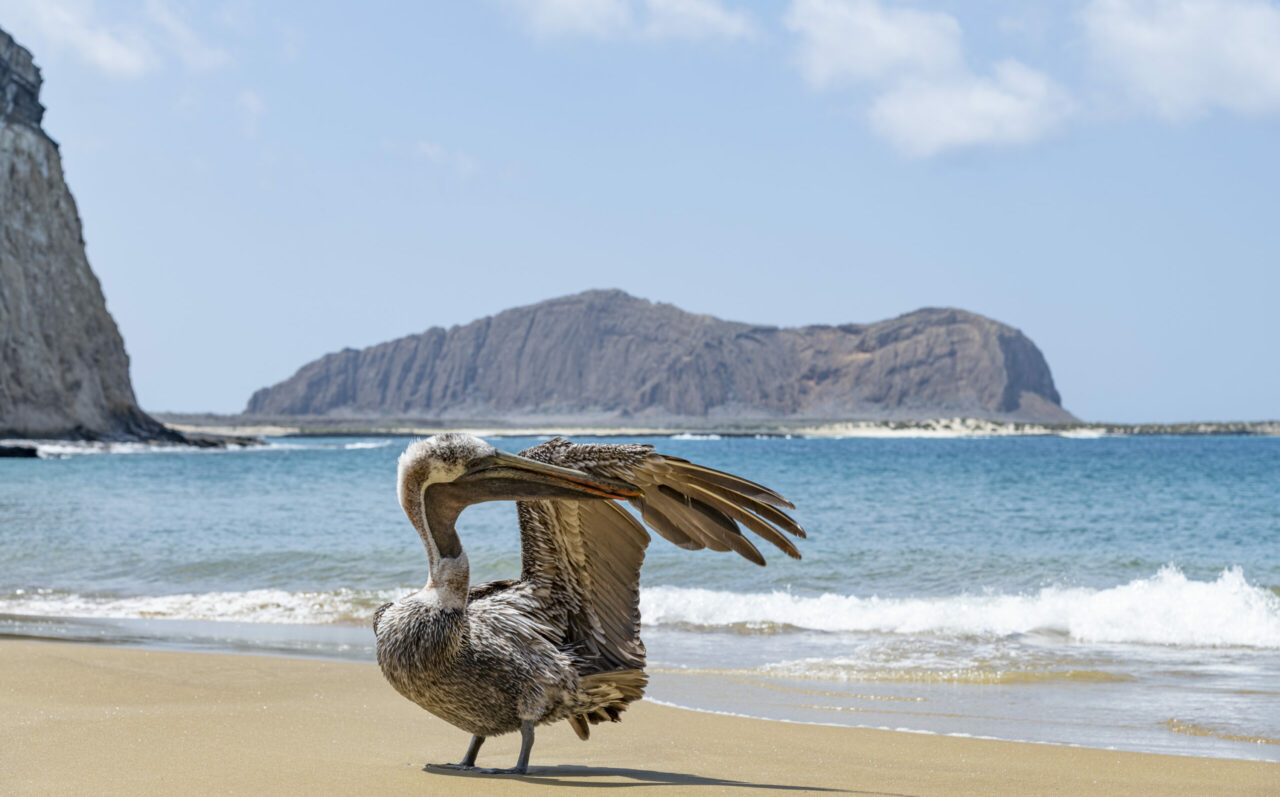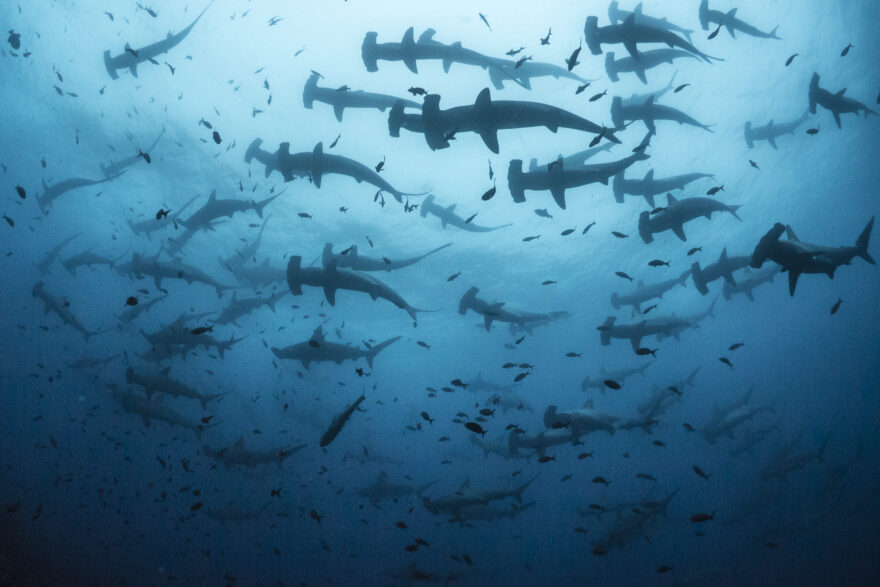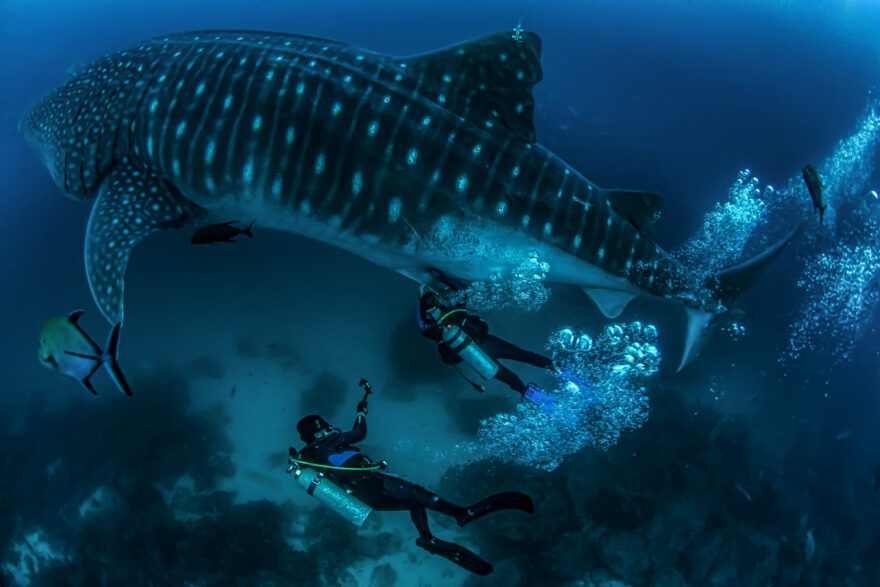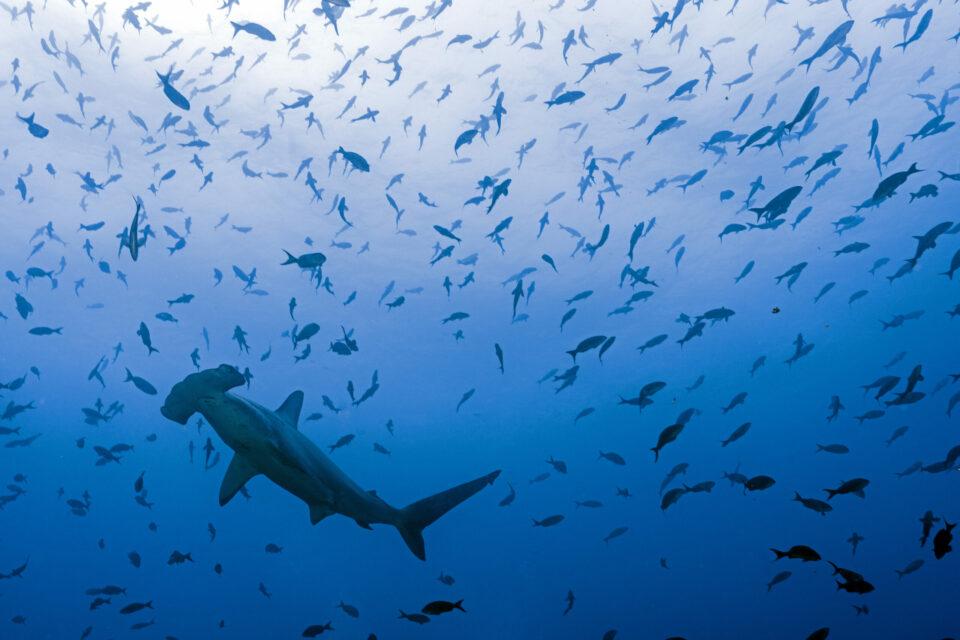
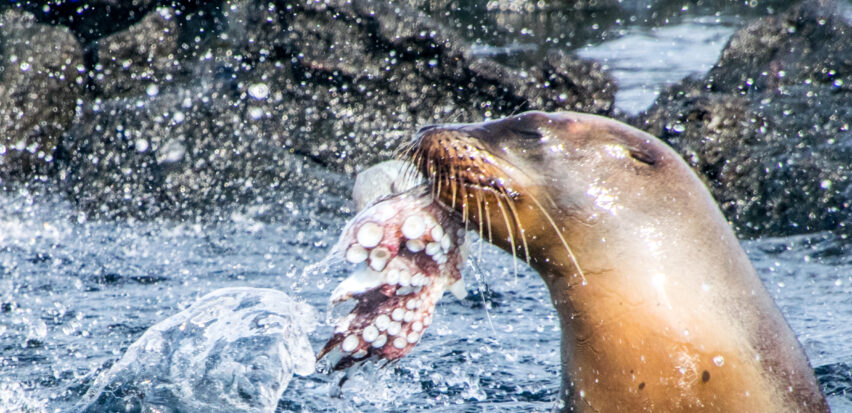
Overview
The Galapagos Marine Reserve (GMR) is one of the largest marine protected areas in the world and is a UNESCO World Heritage Site in its own right, a mark of recognition for its environmental, economic and cultural importance. Formally designated as a protected area in 1998, the GMR now covers an area of 198,000 km² following the addition of the new Hermandad Marine Reserve in 2022, and is home to a host of iconic marine species, including some of the world’s largest schools of scalloped hammerhead sharks, Galapagos sea lions and Galapagos penguins.
Project Partners





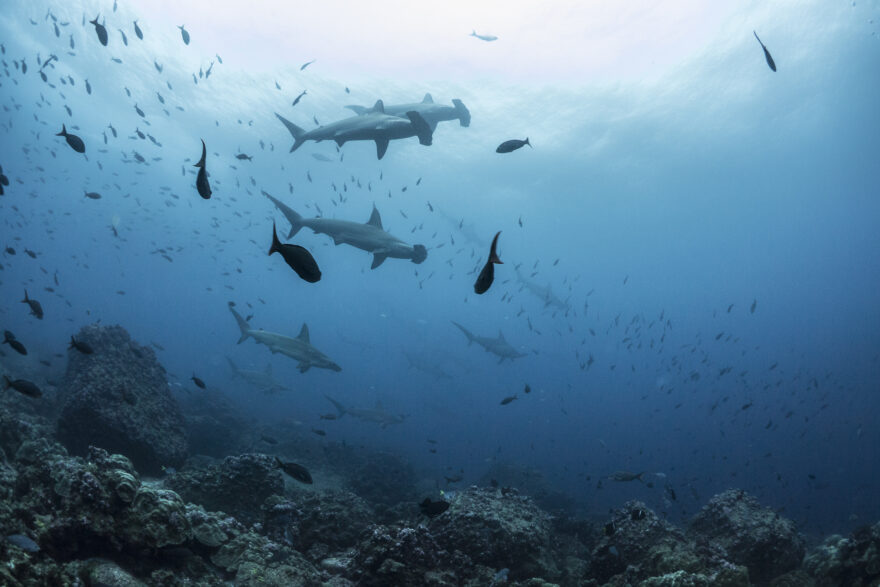
The problem
The Galapagos Islands are located in the Eastern Tropical Pacific, a region of high importance to ocean biodiversity conservation. This region is subject to intense fishing activity by international industrial fleets, and illegal, unreported and unregulated (IUU) fishing is rife, leading to concerns that these destabilised marine ecosystems will be more vulnerable to negative climate change and pollution impacts. Regional plastic waste leakage from poorly managed continental sources is estimated to be one million tonnes annually and for the portion that reaches the sea, there is a high risk of this pollution reaching the GMR.
IUU fishing and pollution pose severe threats to vulnerable species that live in or migrate through the GMR, including the Critically Endangered scalloped hammerhead shark, as well as threatening the livelihoods of local artisanal fishers that depend on the Reserve’s health. Despite the iconic status of many endangered marine species in the GMR, basic ecological data is often lacking, meaning that the impact of conservation interventions, including protected areas, are hard to measure, as are trends that may correspond to climate change.
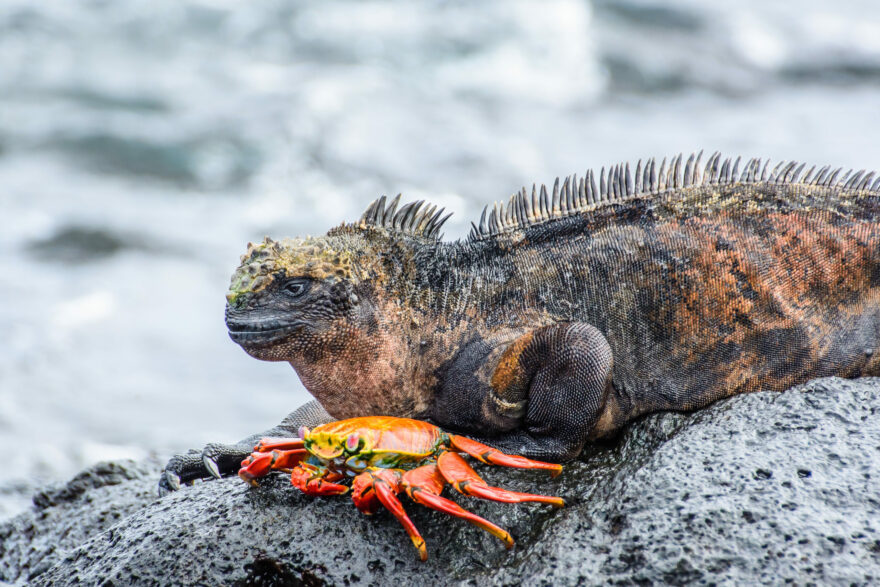
How we’re tackling it
Key to improving impact measurement is strengthening marine biodiversity baselines and our understanding of the movements of migratory species within and outside of the reserve, which we seek to address, ensuring that the impact of protections can be tracked over time (such as on species recovery). This will also help to create a stronger case for greater protections and ensure effective management strategies in different habitats and for individual species.
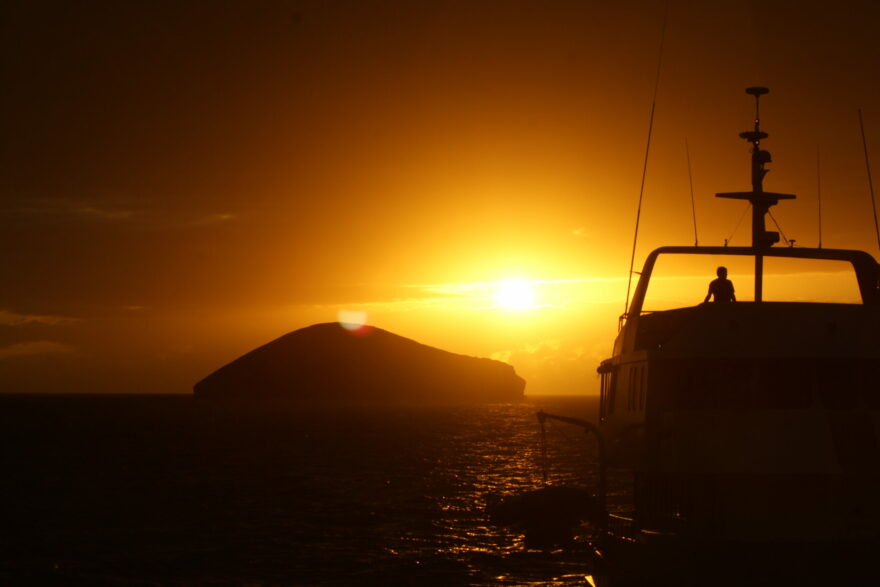
Project goals
By transforming field and data analysis methods into a cohesive ‘MPA impact measurement toolkit’, we will prioritise accessibility for the Galapagos National Park Directorate and other MPA managers in the Eastern Tropical Pacific region, to give our research the best chance of resulting in management, behaviour or policy change.
Project updates

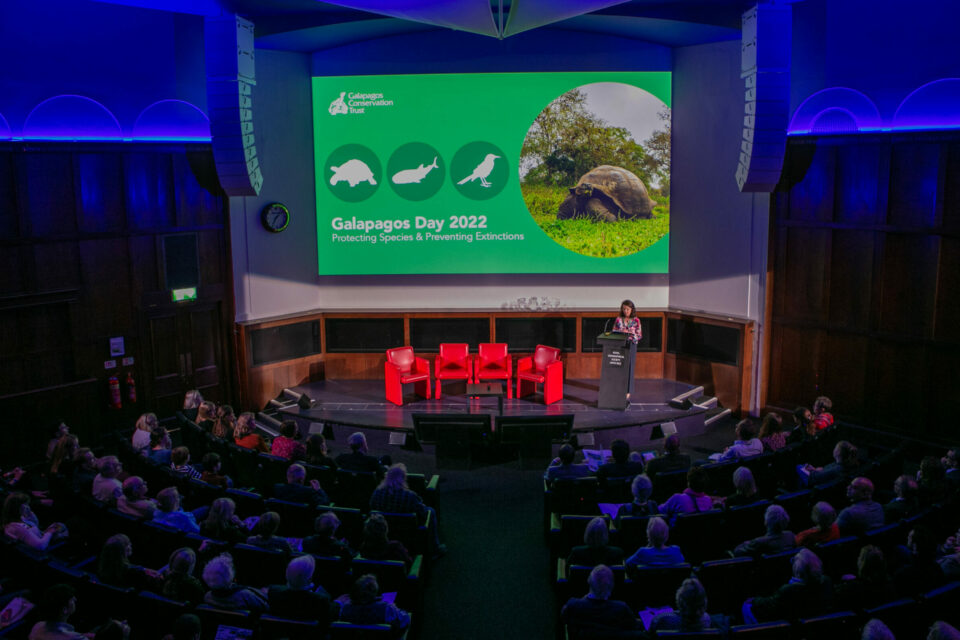
Galapagos Day 2022: Protecting Species & Preventing Extinctions
How you can help
With your help, we can protect the spectacular biodiversity of the Galapagos Marine Reserve.

